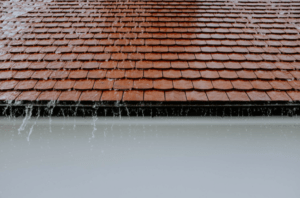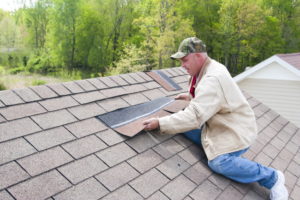Preparing Your Roof for the Phoenix Monsoon Season
The monsoon season of Arizona, Phoenix, may begin in the middle of the year, but it’s best to prepare for it now! Arizonians will experience heavy rains, high winds, even strong thunderstorms that can cause permanent damage to their roofs. It’s the reason why professional roofers are high in demand as the monsoon season looms.
But what can you do to help keep your roof protected and survive the harsh weather conditions coming in? Here are helpful tips on preparing your roof for the Phoenix monsoon season, so read on!
Preparing Your Roof for the Phoenix Monsoon Season

The monsoon season begins in June until September, with July and August bringing in the strongest storms. Your roof will take a beating from it, with the strong winds and dust storms weakening the roof structure. And don’t get us started with hail, which tears up the roof tiles and shingles!
Your roof is highly susceptible to some form of damage, especially during the monsoon season. Heavy storms and hurricanes may come during these times, which may leave your roof cracked, with broken or missing tiles, and with a lot of leaks.
That’s why it’s crucial to hire a roofer to roofer to prepare for this and prevent it from happening. In fact, it’s better to do it earlier than days before the monsoon season because roofers have busier schedules, with more people wanting to have their roofs repaired and replaced for the same reason. Early inspections and preventative measures can save you from the hassle and further protect you from the intense monsoon season.
Furthermore, scheduling a roof inspection in Phoenix will protect your valuable investment, which isn’t just your roof. It’s your whole house! You wouldn’t want your floor and furniture to deal with leaks, or worse, full-on damage from a permanently damaged roof. Prioritizing your roof will protect not only your home but also you and your family.
So, besides scheduling for a roofing inspection ASAP, what else can you do to prepare your roof for the monsoon season? Here are a few helpful tips to follow:
Install and clean your gutters

This is an important task when performing residential roof maintenance. Clean out all the leaves and debris from the gutters, allowing more water space that drains efficiently during big storms.
Gutters should move water away from the house, and if they are clogged from leaves and debris, it won’t perform their job. With clogged gutters, the water drains slowly and would have water back up under the roofing system, causing leaks.
If you have no gutters in your home yet, make sure you have them installed ASAP!
Prune the trees
It’s best to trim back your foliage around the house, which lessens the risk of twigs and leaves clogging the gutters. Also, remove the big branches, which decrease the chances of limbs falling on the roof and house during the strong winds and storms.

Remove debris around the house
The strong winds and rain won’t just hurt your roof. It would also pick up other objects, hurling them against houses! It can come from large rocks, sticks, or other household belongings sitting outside.
Besides trimming your plants and trees, keep your surrounding area clear. Please pick up all the debris and outdoor furniture, throwing them away or keeping them inside your house. While doing this won’t completely eliminate the risk of things flying to your house (your neighbor’s stuff might fly!), but it still lessens the ‘ammunition’ the weather can use.
Checking your roof

Other than scheduling a roof inspection, check your tiles and shingles yourself as well. Also, note when you had your roof installed and last repaired, which gives you an idea of when your roof must go through maintenance or replacement.
Tile roofs can last between 40-50 years, but that may shorten based on Arizona’s harsh and erratic weather conditions, not to mention the heat. The heat can shorten your roof’s lifespan by up to a whopping 20 years!
This is why you must inspect your roof for any signs of damage that require repair or replacement. If your roof needs a complete replacement before the monsoon season, make sure that you never use rubberized or plastic flashings.
Instead, we recommend using galvanized metal flashings. These would hold up to heat, extending the lifespan. You can also look into Arizona’s most robust roofing materials, which can put up a fight against the monsoon season.
Besides this, do check for any sliding tiles in your roof, which must be reinstalled and fastened to avoid them from blowing away from the strong winds and storms. Look out for the following:
- Any broken roof tiles
- Missing shingles
- Loose flashings
- The poor texture on your roof
When you see what your roof needs and also have your roof properly inspected, you can then follow up on repairs with a professional roofer. Avoid doing the repairs yourself, especially if you don’t have the proper tools and knowledge. This can lead to a poor job or even accidents and injuries!
If your roof doesn’t require repairs and is in excellent condition, it’s best to perform more preventative measures before the monsoon season. Refresh the sealings around the flashings and elements, even repairing the tiniest tears, leaks, or cracks, which can worsen during the harsh weather.

Wrapping It Up
The monsoon season can cause severe damage to your house, from minor leaks to cracks from the harsh weather. There are ways to prevent that, starting by preparing your roof for the Phoenix monsoon season. Even if monsoon season isn’t coming yet, it’s best to have a professional roofing company take preventative measures for your roof to last even longer, regardless of the weather.
Contact us now if you’re looking for a reputable roofer to help protect and repair your roof. We’ll let you know what services we can offer based on your individual needs, along with an inspection!
